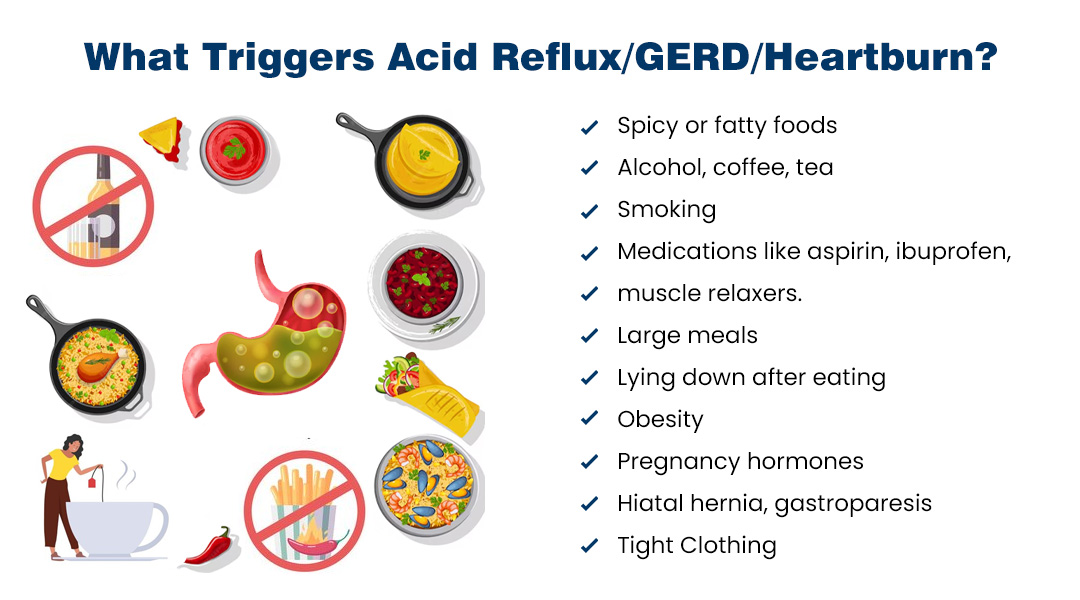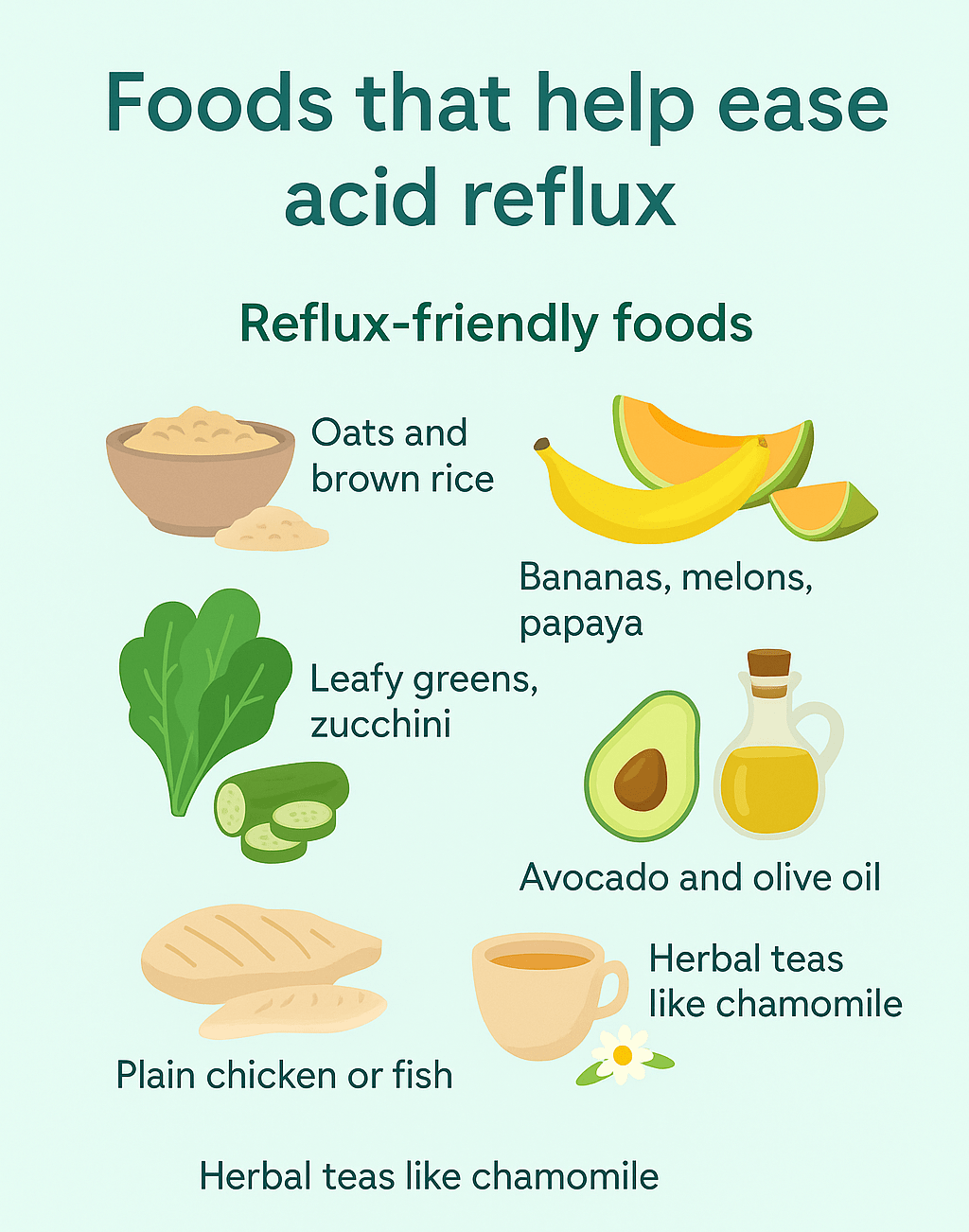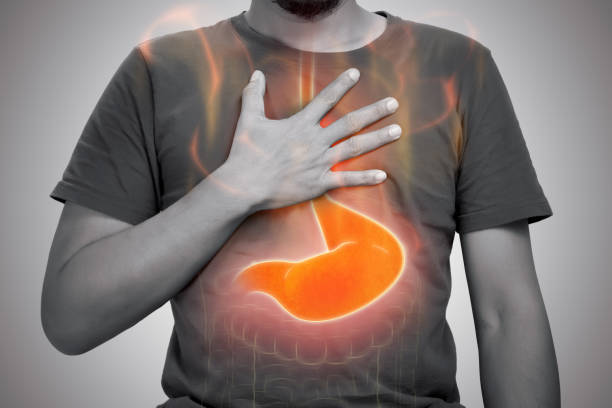Picture this: you’ve just finished a delicious dinner with friends, feeling satisfied and content. But within an hour, that familiar burning sensation creeps up your chest, leaving you reaching for antacids and wondering what went wrong. If this scenario sounds all too familiar, you’re not alone. Millions of people worldwide struggle with acid reflux, and the foods we eat play a starring role in either triggering or soothing those uncomfortable symptoms.
Acid reflux, medically known as gastroesophageal reflux disease (GERD), occurs when stomach acid flows backward into the esophagus, causing that characteristic burning sensation we call heartburn. While occasional heartburn is normal, frequent episodes can significantly impact your quality of life. The good news? Making strategic dietary choices can be one of the most effective ways to manage your symptoms naturally.
Understanding Your Body’s Digestive Drama
When you eat, your stomach produces acid to help break down food. Normally, a muscular valve called the lower esophageal sphincter acts like a one-way door, allowing food to enter your stomach but preventing acid from escaping back up. However, when this valve weakens or relaxes inappropriately, stomach acid can splash up into your esophagus, causing irritation and inflammation.
The symptoms extend beyond simple heartburn. You might experience a sour taste in your mouth, regurgitation of food or liquid, chest pain that can be mistaken for heart problems, or even a persistent cough. Some people describe feeling like they have a lump in their throat or experience difficulty swallowing. These symptoms can occur immediately after eating or even hours later, particularly when lying down.
Understanding how different foods affect this delicate system is crucial for managing your symptoms. Some foods naturally increase stomach acid production, while others relax the esophageal sphincter, making reflux more likely. Conversely, certain foods can help neutralize acid, reduce inflammation, and support overall digestive health.
The Troublemakers: Foods That Fan the Flames

Certain foods have earned their reputation as acid reflux triggers, and understanding why can help you make informed choices about your diet. Citrus fruits like oranges, lemons, and grapefruits are among the most notorious offenders. Their high acid content can directly irritate an already inflamed esophagus, while also increasing stomach acid production. This doesn’t mean you need to completely eliminate vitamin C from your diet, but you might want to enjoy that morning orange juice with breakfast rather than on an empty stomach.
Tomatoes and tomato-based products present a similar challenge. Whether it’s that comforting bowl of marinara sauce or a seemingly innocent slice of pizza, tomatoes are naturally acidic and can trigger symptoms in sensitive individuals. The concentrated nature of tomato paste, sauce, and juice can make them even more problematic than fresh tomatoes.
Fatty and fried foods create problems through different mechanisms. These foods take more time and energy to digest, keeping your stomach working harder and longer. This extended digestion period increases the likelihood of acid reflux, especially when combined with large portion sizes. Additionally, fatty foods can relax the lower esophageal sphincter, making it easier for acid to escape upward.
Spicy foods, while beloved by many, can irritate the esophageal lining and increase stomach acid production. The capsaicin in hot peppers doesn’t just create heat in your mouth; it can trigger inflammation throughout your digestive tract. However, individual tolerance varies significantly, and some people find that gradually building up their spice tolerance can help reduce sensitivity over time.
Coffee deserves special mention as both a beloved daily ritual and a common trigger. Both regular and decaffeinated coffee can stimulate acid production and relax the esophageal sphincter. The temperature of your coffee matters too; very hot beverages can aggravate symptoms regardless of their acidity level.
Alcohol affects acid reflux in multiple ways. It increases stomach acid production, relaxes the esophageal sphincter, and can irritate the esophageal lining directly. Wine, particularly red wine, tends to be more problematic than other alcoholic beverages due to its higher acidity.
Carbonated beverages create additional pressure in your stomach, which can force acid upward into the esophagus. The bubbles that make these drinks refreshing can literally push stomach contents in the wrong direction. This includes everything from soda to sparkling water, though the added sugars and acids in sodas make them particularly troublesome.
Chocolate, unfortunately, contains compounds that can relax the esophageal sphincter while also containing caffeine, which stimulates acid production. Dark chocolate tends to be more problematic than milk chocolate due to its higher concentration of these compounds.
Mint, despite its reputation for soothing digestive issues, can actually worsen acid reflux by relaxing the esophageal sphincter. This includes peppermint tea, mint gum, and those after-dinner mints that seem so appealing after a large meal.
The Heroes: Foods That Bring Relief

Fortunately, many delicious and nutritious foods can help manage acid reflux symptoms. Bananas are often called nature’s antacid due to their natural alkalinity and ability to coat the esophageal lining. They’re also rich in potassium, which helps maintain proper muscle function, including the muscles involved in digestion.
Melons, including cantaloupe, honeydew, and watermelon, are low in acid and high in water content, making them excellent choices for people with acid reflux. Their natural sweetness can also help satisfy cravings for more problematic desserts.
Oatmeal serves as an excellent breakfast choice because it’s filling, absorbs excess stomach acid, and provides sustained energy without causing rapid spikes in blood sugar. The fiber content also promotes healthy digestion and can help prevent constipation, which can worsen reflux symptoms.
Green vegetables like broccoli, asparagus, and leafy greens are naturally low in acid and high in fiber. They’re also rich in nutrients that support overall digestive health. Cauliflower is particularly beneficial as it’s alkaline and can help neutralize excess stomach acid.
Lean proteins such as chicken breast, fish, and egg whites are easier to digest than fatty meats and are less likely to trigger reflux. Fish, in particular, provides omega-3 fatty acids that have anti-inflammatory properties. When preparing these proteins, avoid frying and opt for grilling, baking, or steaming instead.
Ginger has been used for centuries to treat digestive issues, and modern research supports its effectiveness in reducing inflammation and nausea. You can enjoy ginger as a tea, add fresh ginger to smoothies, or incorporate it into your cooking. Start with small amounts to assess your tolerance, as too much ginger can sometimes irritate sensitive stomachs.
Fennel is another traditional digestive aid that can help reduce acid reflux symptoms. It has a mild, slightly sweet taste and can be eaten raw in salads, cooked as a side dish, or brewed as a tea. Fennel seeds are also commonly chewed after meals in many cultures to aid digestion.
Almonds, when eaten in moderation, can help neutralize stomach acid. Their healthy fats and protein content make them a satisfying snack that won’t trigger reflux in most people. However, portion control is important, as too many nuts can be difficult to digest.
The Gut Connection: Probiotics and Digestive Health
An often overlooked aspect of acid reflux management is the role of gut health and beneficial bacteria. Your digestive system is home to trillions of bacteria that play crucial roles in digestion, immune function, and overall health. When this bacterial balance is disrupted, it can contribute to various digestive issues, including acid reflux.
Probiotics, which are live beneficial bacteria, can help restore this balance and improve digestive function. Research suggests that certain probiotic strains may help reduce acid reflux symptoms by improving the overall health of your digestive tract and strengthening the barrier function of your intestinal lining.
Yogurt with live cultures is one of the most accessible sources of probiotics. Choose plain, unsweetened varieties to avoid added sugars that might worsen symptoms. Greek yogurt is particularly beneficial due to its higher protein content and thicker consistency, which can help coat and soothe the esophageal lining.
Kefir, a fermented milk drink, contains a more diverse array of probiotic strains than yogurt and may be better tolerated by some people. Its tangy flavor and creamy texture make it an excellent base for smoothies when combined with reflux-friendly fruits like bananas or melons.
However, it’s important to note that while probiotics can improve overall digestive health, they may initially cause some digestive adjustments, including temporary increases in gas or flatulence. This is typically a sign that the beneficial bacteria are establishing themselves in your gut and competing with potentially harmful bacteria. These symptoms usually subside within a few days to weeks as your digestive system adapts.
If you’re concerned about flatulence while incorporating probiotics into your diet, start with smaller amounts and gradually increase your intake. You might also consider taking probiotic supplements, which can provide targeted strains without the additional ingredients found in fermented foods that might trigger reflux.
Smart Eating Strategies for Long-Term Relief
Beyond choosing the right foods, how and when you eat can significantly impact your acid reflux symptoms. Eating smaller, more frequent meals helps prevent your stomach from becoming overly full, which can increase pressure and promote reflux. Instead of three large meals, try eating five or six smaller portions throughout the day.
Timing your meals is crucial for nighttime symptom management. Avoid eating within two to three hours of bedtime to allow your stomach time to empty before you lie down. When you do sleep, elevating the head of your bed by six to eight inches can help gravity keep stomach acid where it belongs.
The pace at which you eat also matters. Eating too quickly can cause you to swallow air, leading to bloating and increased pressure in your stomach. Take time to chew your food thoroughly and put your fork down between bites. This slower pace also gives your brain time to register fullness, helping prevent overeating.
Staying hydrated is important, but the timing of fluid intake can affect reflux symptoms. Drinking large amounts of liquid with meals can dilute digestive enzymes and increase stomach volume. Instead, drink most of your fluids between meals, and limit beverages during eating to small sips as needed.
Keeping a food diary can be invaluable for identifying your personal triggers. Everyone’s digestive system is unique, and foods that bother one person might be perfectly fine for another. Record what you eat, when you eat it, and any symptoms you experience. Over time, patterns will emerge that can guide your dietary choices.
Lifestyle Factors That Make a Difference
While dietary changes are crucial, other lifestyle factors can significantly impact acid reflux symptoms. Maintaining a healthy weight reduces pressure on your stomach and lower esophageal sphincter. Even modest weight loss can lead to meaningful improvements in symptoms.
Stress management is equally important, as stress can increase stomach acid production and affect digestion. Regular exercise, adequate sleep, and stress-reduction techniques like meditation or yoga can all contribute to better digestive health. However, avoid vigorous exercise immediately after eating, as this can worsen reflux symptoms.
Smoking is particularly harmful to people with acid reflux, as it weakens the lower esophageal sphincter and increases acid production. If you smoke, quitting is one of the best things you can do for your digestive health.
Tight clothing around your midsection can increase abdominal pressure and worsen reflux symptoms. Opt for looser-fitting clothes, especially after meals, and consider whether your belt might be too tight.
When to Seek Professional Help
While dietary and lifestyle changes can be highly effective for managing acid reflux, it’s important to recognize when professional medical care is needed. If you experience symptoms more than twice a week, have difficulty swallowing, or notice persistent hoarseness or coughing, consult with a healthcare provider.
Severe or frequent acid reflux can lead to complications including esophageal damage, ulcers, or even precancerous changes. A gastroenterologist can evaluate your symptoms, rule out other conditions, and recommend appropriate treatment options.
Don’t ignore chest pain, especially if it’s accompanied by shortness of breath, sweating, or pain radiating to your arm or jaw. While these symptoms can be caused by acid reflux, they can also indicate a heart attack, which requires immediate medical attention.
Your Journey to Digestive Wellness
Managing acid reflux through dietary changes is a journey, not a destination. What works for one person may not work for another, and your tolerance for certain foods may change over time. Be patient with yourself as you discover what works best for your body.
Start by eliminating the most common triggers from your diet for a few weeks, then gradually reintroduce them one at a time to identify your personal problem foods. This systematic approach will help you create a sustainable eating plan that minimizes symptoms while maximizing nutritional variety and enjoyment.
Remember that occasional indulgences are part of a balanced life. If you choose to eat something that might trigger symptoms, do so mindfully and in moderation. Having a plan for managing occasional flare-ups, whether through over-the-counter medications or dietary remedies, can help you maintain your quality of life.
The path to better digestive health is highly individual, but with patience, attention to your body’s signals, and the right dietary strategies, you can significantly reduce your acid reflux symptoms and reclaim the joy of eating. Your stomach will thank you, and you’ll likely find that many of the foods that soothe acid reflux also contribute to better overall health and well-being.
Key takeaways
- Acid reflux occurs when the contents of your stomach back up into your esophagus, usually because the lower esophageal sphincter, a valve, malfunctions.
- Heartburn, a burning sensation in your chest or throat, is a common symptom of acid reflux.
- Some foods and beverages commonly trigger acid reflux in people who are prone to it, while others tend to neutralize stomach acid or keep reflux in check.
- Consulting with a GI-registered dietitian, such as those at GoGastro Chicago, can help you determine which foods are your unique triggers.
